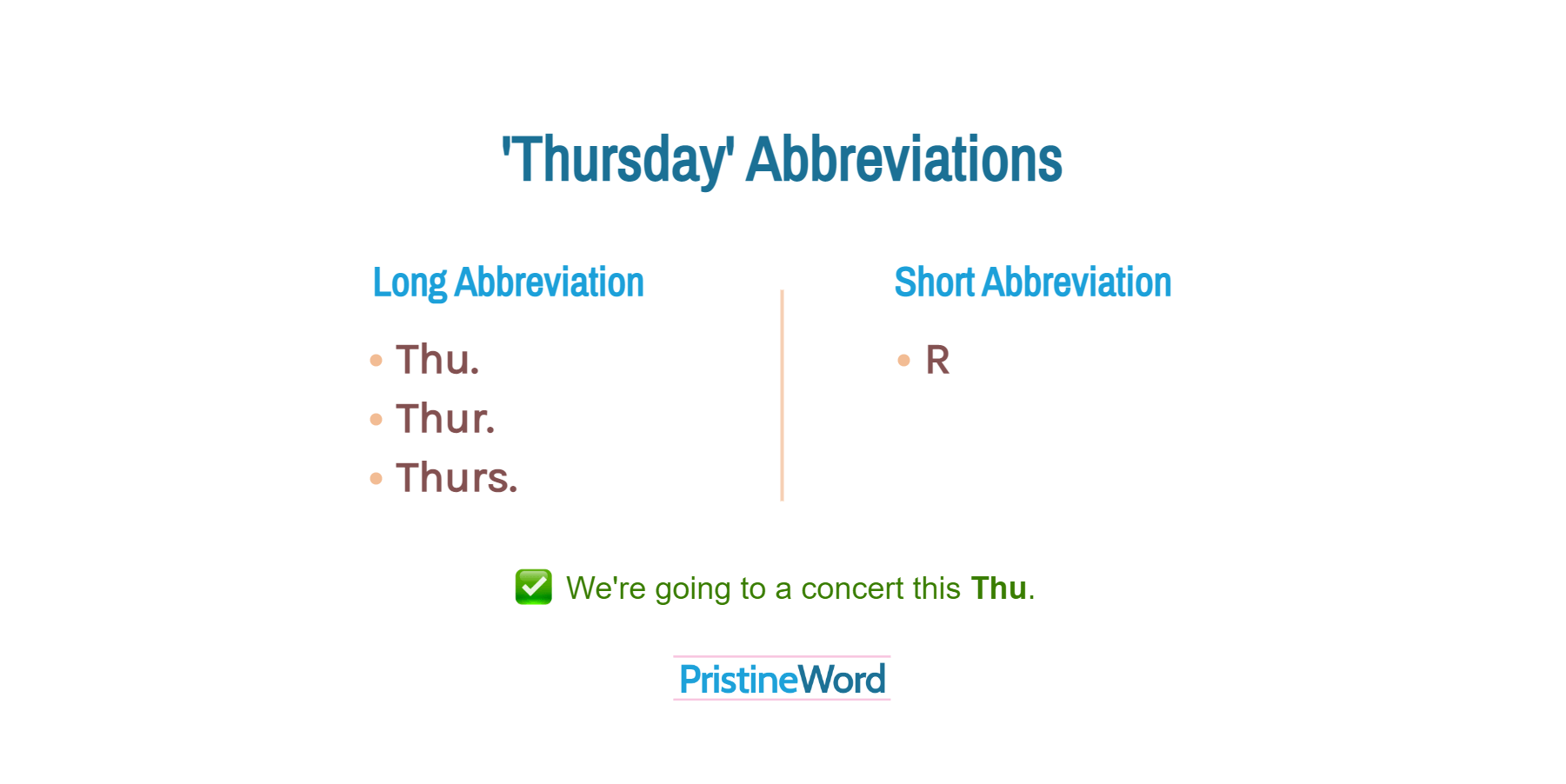There are two ways to abbreviate "Thursday": Long abbreviation (Thu., Thur., or Thurs.) and Short abbreviation (R or Th.)
There are two approaches to abbreviating "Thursday":
-
Long abbreviations (Th., Thu., Thur., or Thurs.)
We'll be there this Thur.
-
Short abbreviation (R)
Performance review meeting on R
These abbreviations are quite frequent in American, British, and Australian English. However, we recommend using the shortest form only if space is limited, for example, to write quick notes or use diagrams, illustrations, tables, or charts.
Mary has a doctor's appointment scheduled for next Thurs.
Account review on R
Ensure it is obvious to readers which day you are referring to.
Open for business this R.
Open for business this Thurs.
Why do we put a period after "Thu.", "Thur.", and "Thurs."? In this case, MLA style recommends using a period because these abbreviations end in a lowercase letter. If the abbreviation is composed exclusively of capital letters, such as R, we omit the period.
Alessandra's birthday’s on a Thu./Thur./Thurs./R this year.
We'll add here that we should always capitalize Thursday, even if it is abbreviated.
We warmly invite you to visit us on Thu.
We warmly invite you to visit us on thu.
Follow the same strategy to write the rest of the days of the week:

